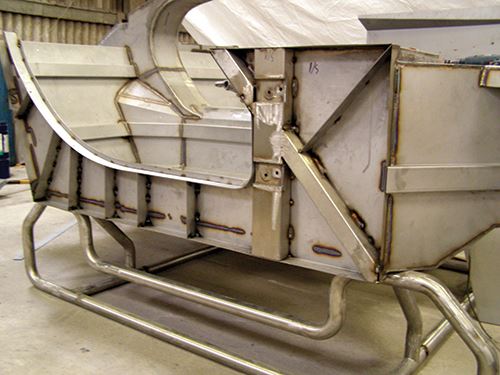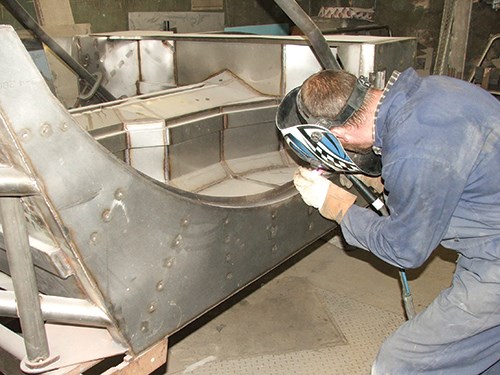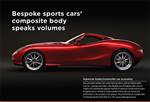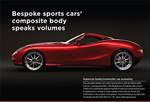Chassis: Unique architecture and materials
Trident Sports Cars Ltd.’s Iceni chassis is formed from 4003 low-chrome/low-carbon stainless steel. It isn’t pretty, but it won’t rust and more importantly, it’s very resilient , making it perfect, says the company, for chassis construction
Trident Sports Cars Ltd.’s Iceni chassis is formed from 4003 low-chrome/low-carbon stainless steel, supplied by Columbus Stainless (Pty.) Ltd. (Middelburg, South Africa). It isn’t pretty (see top photo at left), says Trident’s Phil Bevan, but it won’t rust (the frame is warranted for a century), and more importantly, it’s very resilient (won’t workharden), making it perfect, he says, for chassis construction. That means the Iceni has the highest torsional rigidity of any sports car not using a carbon fiber composite chassis, which, in turn, reportedly means that in a head-on crash at 161 kmh, the engine won’t land in the driver’s lap. Because it won’t workharden, damaged stainless steel can be reworked nearly endlessly without losing its properties and becoming brittle, yet it’s fully recyclable.
The Iceni’s chassis is not, however, a conventional tubular frame. Chassis components are laser cut from sheet metal, then folded via an industrial-origami technique and then TIG (tungsten inert gas) welded. This “disruptive” technology enables startup or established automakers to enter new segments with a much smaller upfront investment, making it ideal for low-volume vehicles. Bevan says the Iceni is the same size as the Aston Martin DB9 luxury sedan with an aluminum chassis (from Aston Martin Lagonda Ltd., Gaydon, UK), yet is one-third stronger, 24 kg lighter and reportedly far more easily repaired.
The Iceni convertible’s chassis includes a central, longitudinal spine/rollover bar, and strategically positioned folds and shapes (further benefits of an origami vs. tubular frame) that enable the vehicle to form a strong passenger cell. This cage not only provides excellent occupant crash protection, but also is designed to prevent anything from penetrating the bulkhead. The mid-front-mounted engine is designed to drop down and become wedged in the tunnel during a crash, and even the crankshaft pulley stays around the car’s wheelbase.
The vehicle also sports 8-cm-wide seatbelts with strong anchorage points. Reportedly, when the car was tested, it had the strongest chassis ever assessed for seatbelt retention.
This short article is a sidebar to a feature article titled "Bespoke sports cars' body speaks volumes" and a companion sidebar titled "Torque-multiplication: A Euro 7-ready diesel supercar?" To read either article, click on its title under "Editor's Picks," at top right.
Related Content
-
Automotive chassis components lighten up with composites
Composite and hybrid components reduce mass, increase functionality on electric and conventional passenger vehicles.
-
Jeep all-composite roof receivers achieve steel performance at low mass
Ultrashort carbon fiber/PPA replaces steel on rooftop brackets to hold Jeep soft tops, hardtops.
-
ASCEND program update: Designing next-gen, high-rate auto and aerospace composites
GKN Aerospace, McLaren Automotive and U.K.-based partners share goals and progress aiming at high-rate, Industry 4.0-enabled, sustainable materials and processes.

.jpg;width=70;height=70;mode=crop)















.jpg;maxWidth=300;quality=90)
